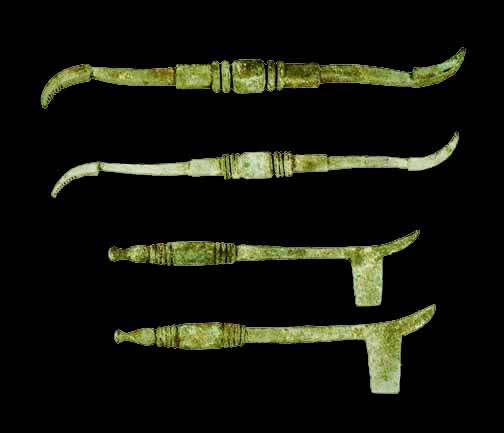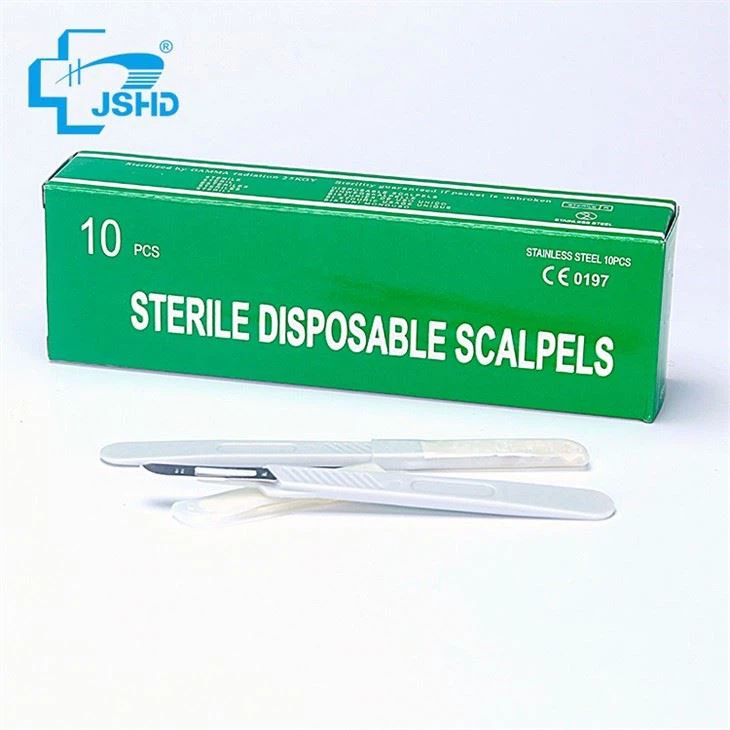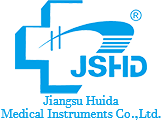From Ancient Incisions to Precision Tools
How Modern Surgical Blades Became Essential in Today’s Operating RoomsIn the realm of surgery, meticulousness is not a choice, but rather a necessity needed to save a life. Every cut, every step requires a great degree of exactness. One of the oldest and most fundamental assets in the medical world, the scalpel, exemplifies this best.
However, the modern scalpel is not a story that can be traced too far back. It is the most recent chapter in the story of relentless evolution in technology, patient healthcare, changes in surgical practice, and, most importantly, a sustained effort towards augmented results. Blades used in surgery have shifted from cumbersome knives to single-use scalpels that look, and are crafted, for ideal workflow. Jiangsu Huida Medical Instruments Co., Ltd. (JSHD) has quickly become the goto company for scalpels, and in this review we will reason why.
A Blade Through Time: The Origins of the Surgical Scalpel
Obsidian, bronze, and surprisingly flint were some of the materials ancient civilizations used to make incisions when performing different surgeries. Before stainless steel and precision sharpening, these materials would be sharpened. Tombs in Egypt illustrate that scalpels were utilized during embalming; great Ancient Greece physicians such as Hippocrates incorporated them into their earliest medical books.
When it comes to the scalpel as a surgical tool, it is only in the 19th and early 20th century that it started taking its current form. The earliest designs came with foldable metal blades that were sharp, could be reused but needed to be constantly sharpened and sterilized. The entire process was labor intensive and extremely dangerous due to infection control.
With the advancement of medicine and expansion of hospitals came the dire need for standardized blades that ensured safety and proper hygiene.

The Rise of the Modern Scalpel: Designed for the Demands of Modern Surgery
In the 20th century, with the rise of aseptic techniques scalpels underwent a detailed redesign. Modern surgical blades are sleek, sharp, sterile and very often disposable.
Let's analyze the evolutionary stages of the modern scalpel and examine how each stage tackled the problems presented in surgical settings:
● Stage 1: Reusable Steel Blades
Era: Pre 1950s
Pros: Long-lasting, economical in the long run
Cons: Prone to infections, lengthy sterilization process, blunt on very sharp edges.
Use Case: Surgical centers that barely had sterilization equipment.
● Stage 2: Interchangeable Blade Systems
Era: 1950s to 1970s
Pros: Improved efficiency levels, sterile blades with reusable handles.
Cons: Step above end blades harvesting severely Endangering surgical staff.
Milestone: Enhanced uniformity in blade edges and cleanliness.
● Stage 3: Disposable Scalpels
Era: 1980s to 2000s
Pros: Free from any sterilization, prover ready to use, everyone will use.
Cons: Unwanted bio waste, which could easily be dealt with hospital waste management.
Use Case: Quicker paced surgery centers, emergency, Outpatient surgery, clinics.
● Stage 4: Safety scalpel
Era: 2000s to Present
Pros: Improved patient safety, higher surgical workflow, greater Occupational health hazards.
Impact: Cuts that are locked away to prevent accidentally cutting oneself and easy to maneuver, blades that have been precision ground aided by new materials kilometers steel and carbon.
The capability of modern scalpels extends beyond merely serving as a cutting edge. They are self-sufficient in protocols such as safety protocols. They can easily be embedded in systems that require sterile protocols and digital tracing configuration.

Why the Market Demanded Improved Surgical Blades
The switch to disposable scalpels and more advanced surgical blades was primarily motivated by significant medical shifts:
● Increased Standards for Infection Control
● Rise in Global Surgical Cases
● Need for Economical, Pre-Sterilized Tools
● Lowering Work-Related Injuries Among Medical Personnel
● ISO, CE, and FDA Regulatory Pressure
● Healthcare practitioners require tools that not only operate as intended, but require smarter, safer, and quicker procedures.
Why Choose US
One of the leaders in this transformation is Jiangsu Huida Medical Instruments Co., Ltd. (JSHD), a brand that has long been associated with the high quality of medical consumables for more than 20 years.
Here is what makes Huida modern scalpels the preferred choice for surgeons, pathologist, and laboratory technicians from across the globe:
● Broad Choice of Surgical Blades
Surgeons can select from several forms and sizes (for instance, No. 10, 11, 15, 20) to meet their specific needs starting from general surgery and going all the way to delicate pathology procedures.
● Single Use Disposable Scalpels Fully Sterile
These are pre-packed in easy peel sterile packaging which decreases preparation time and improves infection control.
● Design Prioritizing Safety
Modern scalpels incorporate safety sheaths or retractable blades to reduce the risk of needle-stick injuries in busy ORs.
● Enhanced Blade Materials
Blades manufactured from premium carbon or stainless steel, with a precise angle for cutting and maintain the maximum sharpness at all times.
● Worldwide Certifications
Huida scalpels are fully compliant with ISO 13485, CE, as well as FDA, and can be utilized in hospitals all over the globe.
● Flexible Supply Chain
Whether you’re a local hospital or an international wholesaler, you can always rely on Huida’s streamlined ERP and MES for timely deliveries and consistent quality, even in large quantities.
Post time:2025-03-24




